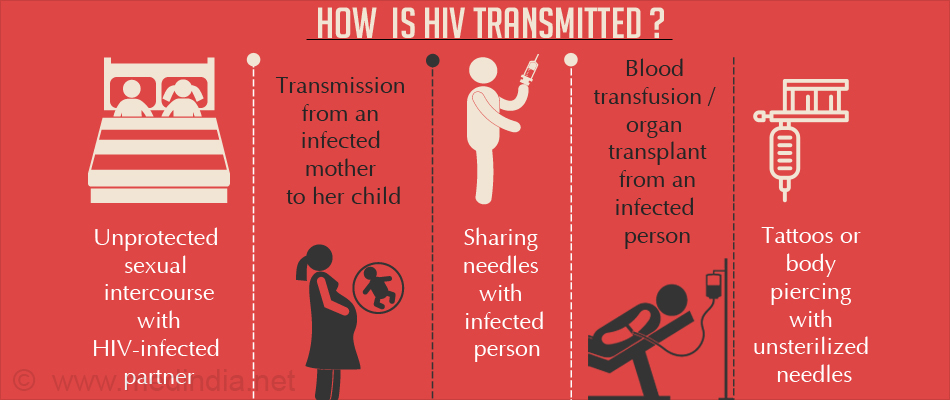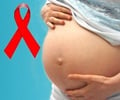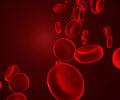How is HIV Transmitted?

As with the transmission of any organism, there are 3 important elements to consider - the quantity, the quality, and the route of transmission
HIV can be transmitted from an infected person to another through: Blood (including menstrual blood)
- Semen
- Vaginal secretions
- Breast milk
Blood contains the highest concentration of the virus, followed by semen, followed by vaginal fluids, followed by breast milk.
Activities That Allow HIV Transmission
- Unprotected sexual contact
- Direct blood contact, including injection drug needles, blood transfusions, accidents in health care settings or certain blood products
- Mother to baby (before or during birth, or through breast milk)
Sexual intercourse (vaginal and anal):
In the genitals and the rectum, HIV may infect the mucous membranes directly or enter through cuts and sores caused during intercourse (many of which would be unnoticed).
Oral sex (mouth-penis, mouth-vagina):
The mouth is an inhospitable environment for HIV (in semen, vaginal fluid or blood), meaning the risk of HIV transmission through the throat, gums, and oral membranes is lower than through vaginal or anal membranes. There are however, documented cases where HIV was transmitted orally, so we can't say that getting HIV-infected semen, vaginal fluid or blood in the mouth is without risk. However, oral sex is considered a low risk practice.
Sharing injection needles:
An injection needle can pass blood directly from one person's bloodstream to another. It is a very efficient way to transmit a blood-borne virus. Sharing needles is considered a high-risk practice.
It is possible for an HIV-infected mother to pass the virus directly before or during birth, or through breast milk. Breast milk contains HIV, and while small amounts of breast milk do not pose significant threat of infection to adults, it is a viable means of transmission to infants.
The following "bodily fluids" are NOT infectious:
- Saliva
- Tears
- Sweat
- Feces
- Urine
"In the past decade AIDS has affected almost everyone, often in deeply personal ways. The threat can sometimes seem so overwhelming, and the responses so inadequate, that we're tempted to feel there's nothing we can do. Working on this exhibit has convinced me otherwise." - J. Tevere MacFadyen, NAEC Project Coordinator

















